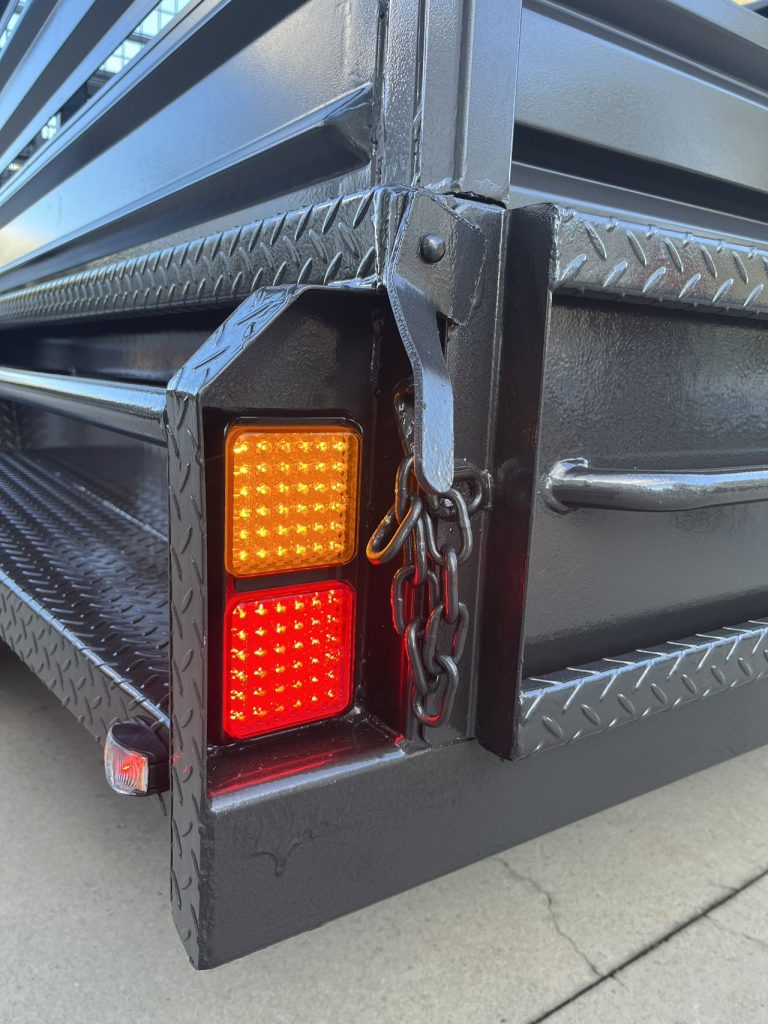In Australia, compliance isn’t just about quality—it’s a legal necessity. For manufacturers of tool trailers, understanding and adhering to the nation’s regulatory framework is key to both safety and market success. This blog outlines the major regulatory considerations, from design and certification to registration and safety equipment, ensuring your tool trailers meet Australian standards.
1. The Australian Regulatory Environment
Australia’s road and vehicle regulations are set at both the state/territory level and via national standards such as the Australian Design Rules (ADRs). While individual jurisdictions (like VicRoads in Victoria or Transport for NSW) may impose specific requirements, manufacturers should aim to meet or exceed these national guidelines. This approach not only ensures broader market acceptance but also minimizes future compliance challenges.
2. Classification and Design Standards for Tool Trailers
Tool trailers—designed to safely transport essential equipment and machinery—often fall under the “light trailer” category. However, factors such as gross vehicle mass, dimensions, and intended use (commercial or private) may affect classification. Key points include:
- Weight and Dimension Limits: Regulations set maximum allowable dimensions and weight capacities for different trailer types. Ensure your tool trailer’s unladen weight, overall length, and width comply with the specific limits outlined by your state’s road authority.
- Structural Integrity and Load Distribution: Australian regulations emphasize that loads must be evenly distributed and securely fastened. Improper load distribution can compromise stability and lead to severe penalties if an accident occurs.
3. Essential Safety and Equipment Requirements
Tool trailers must meet stringent safety standards to protect both drivers and other road users. The following features are typically mandated:
- Braking Systems: For trailers that exceed a prescribed weight threshold, brakes are often required. These braking systems must be robust enough to safely decelerate a fully loaded trailer.
- Lighting and Reflectors: Proper illumination and reflective devices are not optional—they’re required under the ADR guidelines. Your trailers must include correctly positioned brake lights, turn signals, and reflective markers to enhance visibility in all conditions.
- Tow Couplings and Safety Chains: The connection between the towing vehicle and the trailer is critical. Regulatory standards require secure tow bars and safety chains, ensuring the trailer remains firmly attached during transit.
4. Certification, Testing, and Registration
Before your tool trailers hit the market, they must undergo rigorous testing to ensure compliance:
- ADR Certification: Many states require that trailers undergo ADR certification. This process involves a series of tests—often performed by accredited bodies—to confirm that the trailer’s design, construction, and safety features meet Australian standards.
hzjdo.com - State Registration Requirements: Depending on the trailer’s classification and use, you may need to register the unit with local transport authorities. Registration often comes with regular inspections and may include additional documentation proving compliance with load securement, braking, and lighting regulations.
5. Impact on Manufacturing and Market Readiness
For manufacturers, meeting these regulations means integrating compliance into every phase of production:
- Design Optimization: By designing tool trailers with regulatory requirements in mind from the outset, you can avoid costly retrofits and streamline the certification process.
- Quality Assurance and Testing: Establishing rigorous in-house testing protocols not only helps maintain high safety standards but also builds customer confidence.
- Ongoing Regulatory Updates: Australian transport regulations can evolve. Stay informed of changes by regularly consulting state road transport websites and industry bulletins. This proactive approach ensures that your products remain market-ready and legally compliant.
6. Best Practices for Compliance
Here are a few tips to ensure your tool trailers continue to meet Australian standards:
- Collaborate with Accredited Testing Facilities: Partnering with recognized testing agencies can simplify the certification process and expedite market entry.
- Document Everything: Keep detailed records of design changes, testing results, and certification milestones. This documentation is essential in case of inspections or audits.
- Engage with Industry Associations: These groups can provide valuable insights into upcoming regulatory changes and offer networking opportunities with other manufacturers and compliance experts.
Conclusion
Manufacturing tool trailers for the Australian market is both a promising opportunity and a serious responsibility. By understanding the regulatory landscape—from weight and design specifications to safety equipment and certification—you not only comply with the law but also enhance the reliability and reputation of your products. In a market where safety is paramount, aligning your manufacturing practices with Australian standards is a surefire way to drive success and build long-term customer trust.
Stay proactive, stay compliant, and let quality lead the way!
About Trailers Star
At Trailers Star, we are one of Melbourne’s leading trailer suppliers, offering a wide range of high-quality trailers to fit various needs and budgets. Our professional team brings over 15 years of manufacturing and maintenance experience, dedicated to providing trustworthy and friendly service. All trailers sold by Trailers Star come with an 18-month structural warranty (3 months for commercial use). We are proud to be a certified trailer manufacturer, fully compliant with all relevant Australian regulations and standards.

